Sequential Narrative describes art which tells a story in a series of images making use of frames.
Let’s say there are 7 main categories of Narrative art. Narrative art is art which tells a story.
- Monoscenic — represents a single scene with no repetition of characters and only one action taking place
- Sequential — very much like a continuous narrative art with one major difference. The artist uses frames. Each frame is a particular scene during a particular moment.
- Continuous — Continuous narrative art gives clues, provided by the layout itself, about a sequence. Like sequential narrative but without the frames.
- Synoptic — offers the synopsis of a bigger story. You must know a story before you can understand synoptic narrative.
- Simultaneous — has very little visually discernible organisation to those who are not acquainted with its purpose.
- Panoptic — depicts multiple scenes and actions without the repetition of characters. Think of the word ‘panorama’. ‘All-seeing’ (pan + optic)
- Progressive — a single scene in which characters do not repeat. However, multiple actions are taking place to convey a passing of time. A progressive narrative is not to be interpreted as a group of simultaneous events. Progressive narrative art is a sequence dependent on its location. Actions displayed by characters in the narratives compress present and future action into a single image.
These days you find continuous narrative art in comic strips, picture books and story boards.
SEQUENTIAL NARRATIVE IN PICTURE BOOKS
The scene below is from In The Night Kitchen by Maurice Sendak. It looks like a blend between Continuous and Sequential narrative art, because although there is a frame to separate the pictures, the two frames almost seem to form a diptych (but only at first glance — there are two moons after all). I feel this is, overall, an example of Sequential narration.
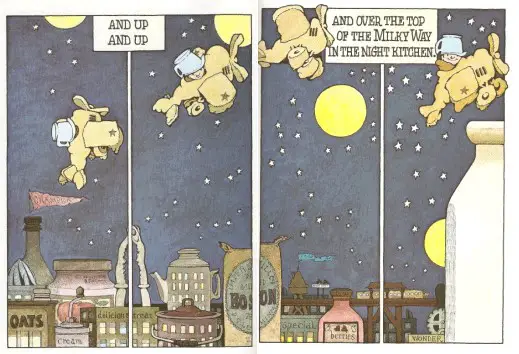
Below, Shirley Hughes has used frames in a similar way. This scene might have been one large scene with no frames, but the frames emphasise the steps taken. She manages to get one smallish group of children from the top of the staircase to outside and down below, in time to see the flying hero do tricks in the air. Notice the teacher is visible at the top and at the bottom, showing that the girl is doing somersaults in the time it takes her classmates to go down the stairs.
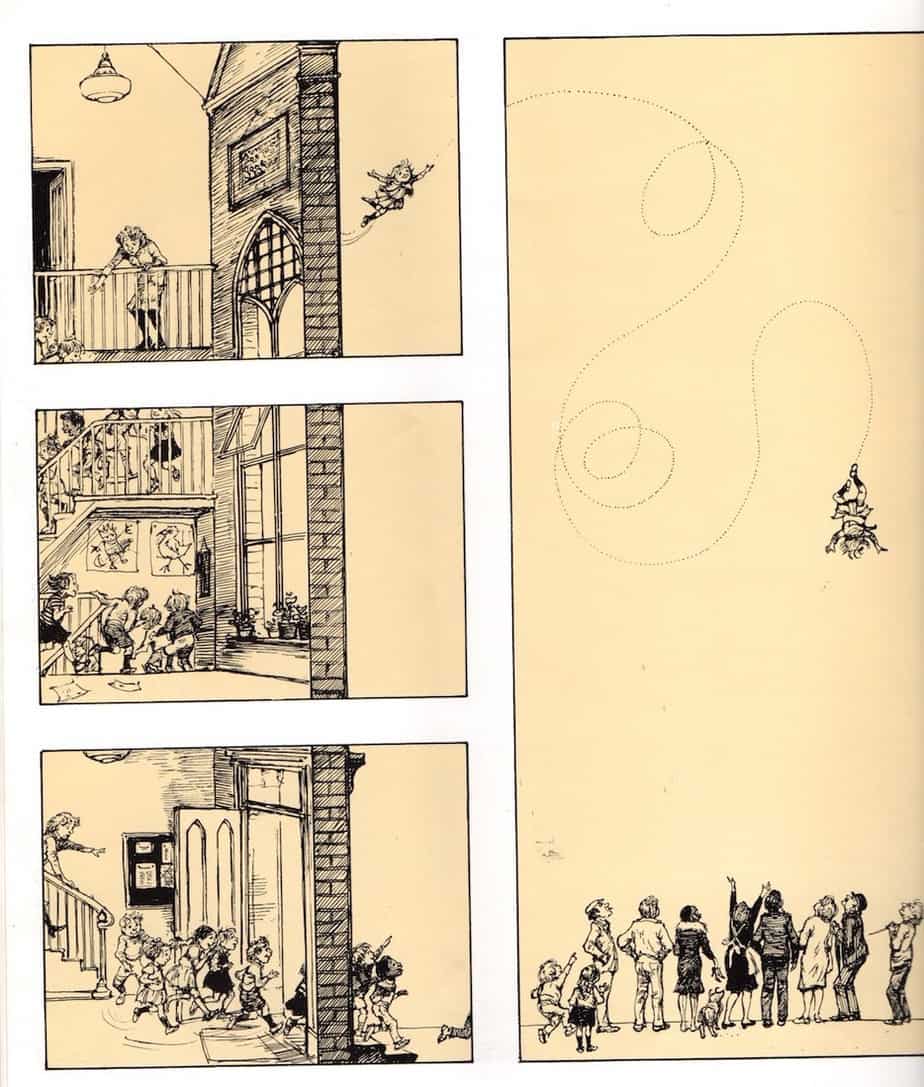
Jan Ormerod is also a fan of sequential narrative in her illustrations. See Sunshine, Moonlight, Putting Mummy to Bed. Below Ormerod uses continuous narrative to depict a child getting undressed and dressed. I make use of this same technique to show a child getting ready for bed, but in an interactive picture book app, Midnight Feast.
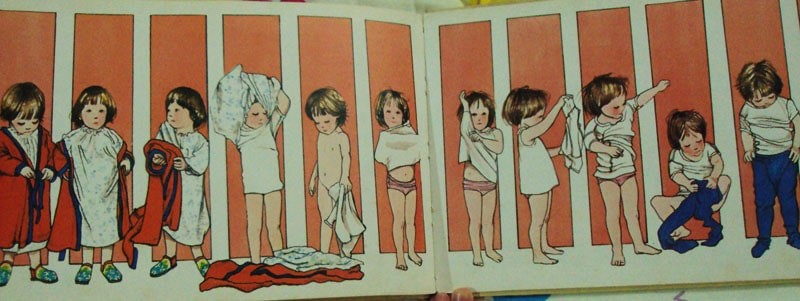
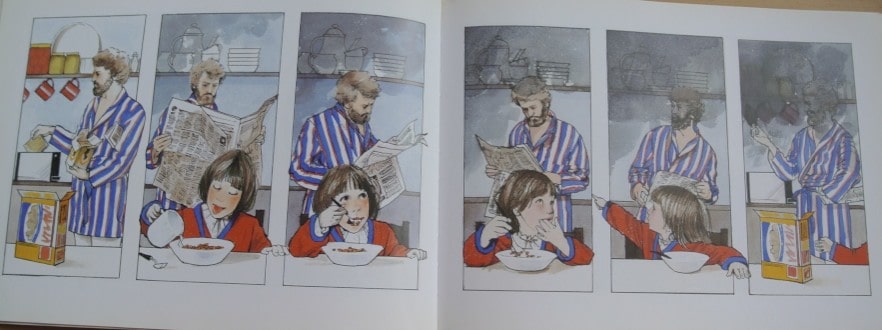
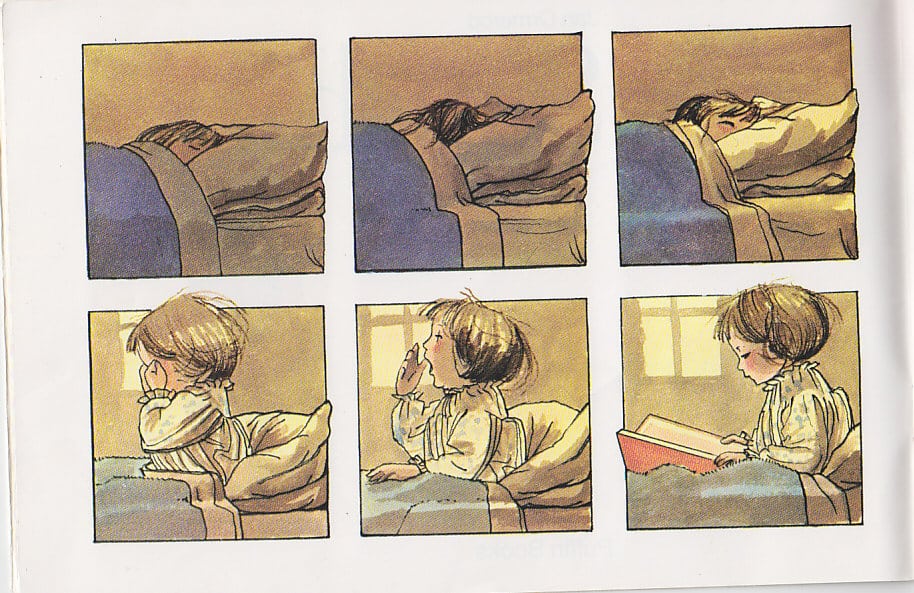

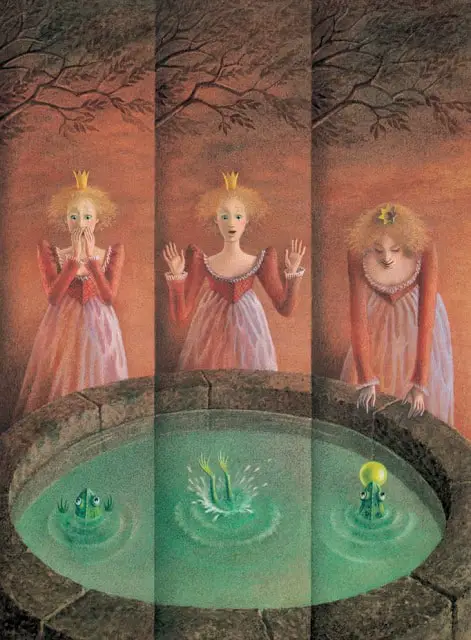
SEQUENTIAL NARRATIVE IN MOVIE POSTERS
In the movie posters below, notice how the designer has used page divisions — two overlapping characters and then a straight line — to indicate separate scenes in some sort of sequence.
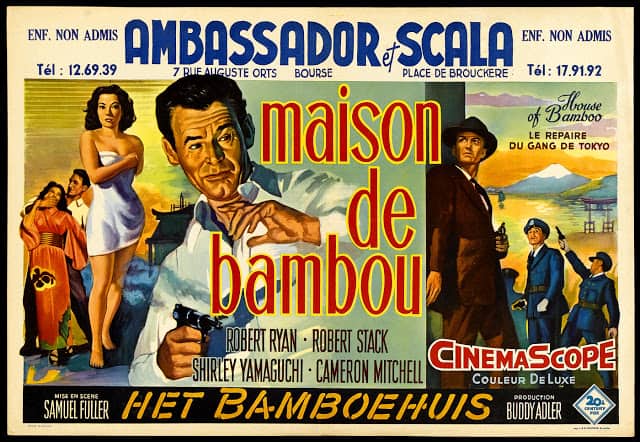
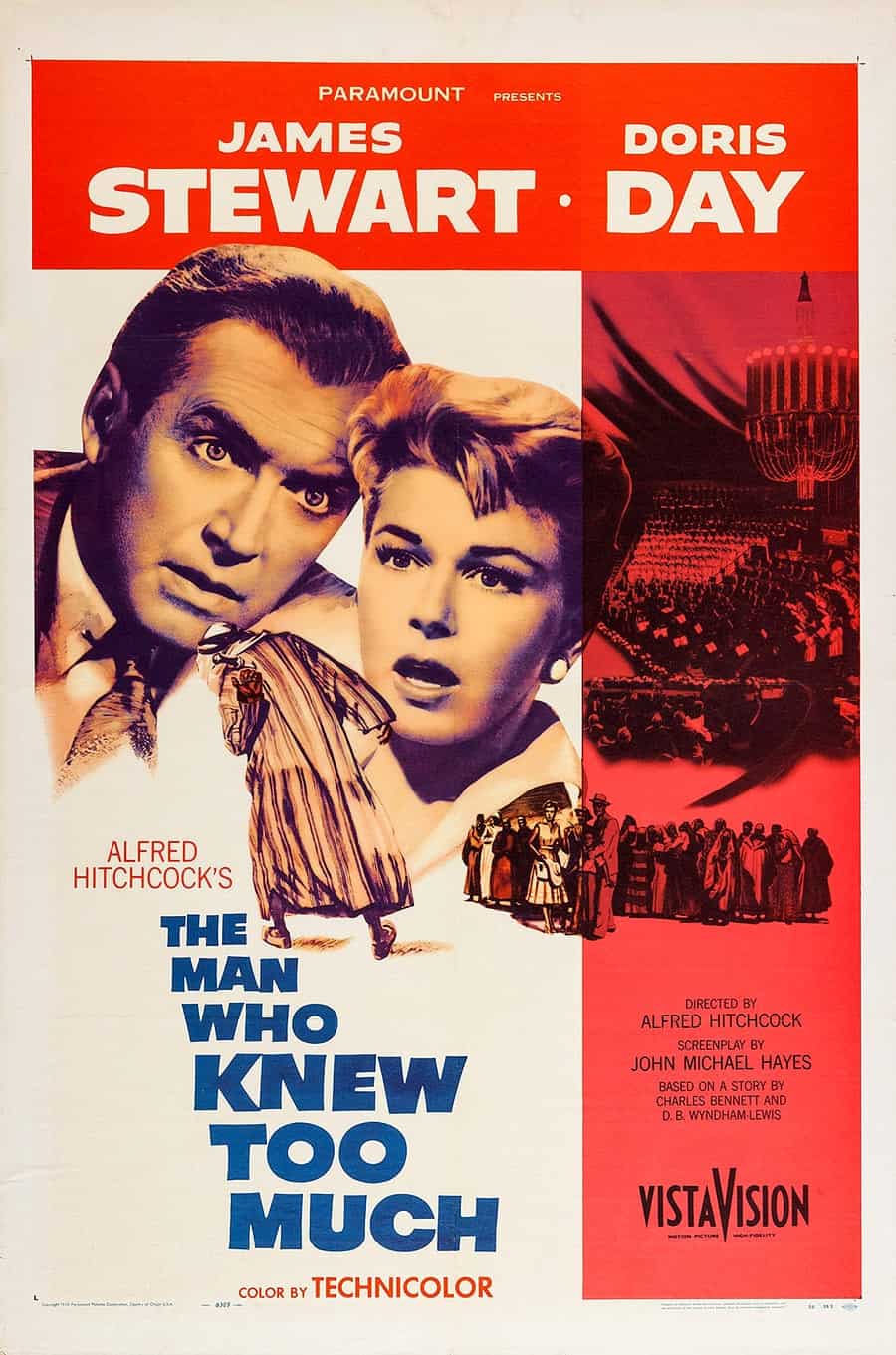
Movie posters these days are rarely as complex, focusing instead on a monoscene. But when movies are marketed with complicated and busy designs, designers can be brutal.
Illustrator Sam Gilbey, who has produced pop culture artwork for properties including Marvel’s Avengers, Teenage Mutant Ninja Turtles, The Karate Kid and Flash Gordon, argues that the introduction of Photoshop may have harmed the industry by making it easier for inexperienced designers to put together collage-style posters without the design skills to back them up.
“Obviously you think of the masters like Richard Amsel, working pre-Photoshop, and you can see how marketing departments have often thought they can now produce something similar internally,” he explains.
Creative Bloq
The keys to achieving a successful busy narrative in a single piece of art:
- Pay attention to where the characters are looking. If they’re all looking at something different for no reason, this will look ill-thought out (and probably is). Eyelines of characters influence eye lines of the viewer. We naturally follow the gaze of other people.
- Pay attention to the colour scheme. This applies to any sort of collage work, but if you’ve copied and pasted art from all over the place (even if that art was created by yourself) you’ll need to use a few colour tricks to bring it all together. Atmospheric perspective and tone will be as important as colour palette.
